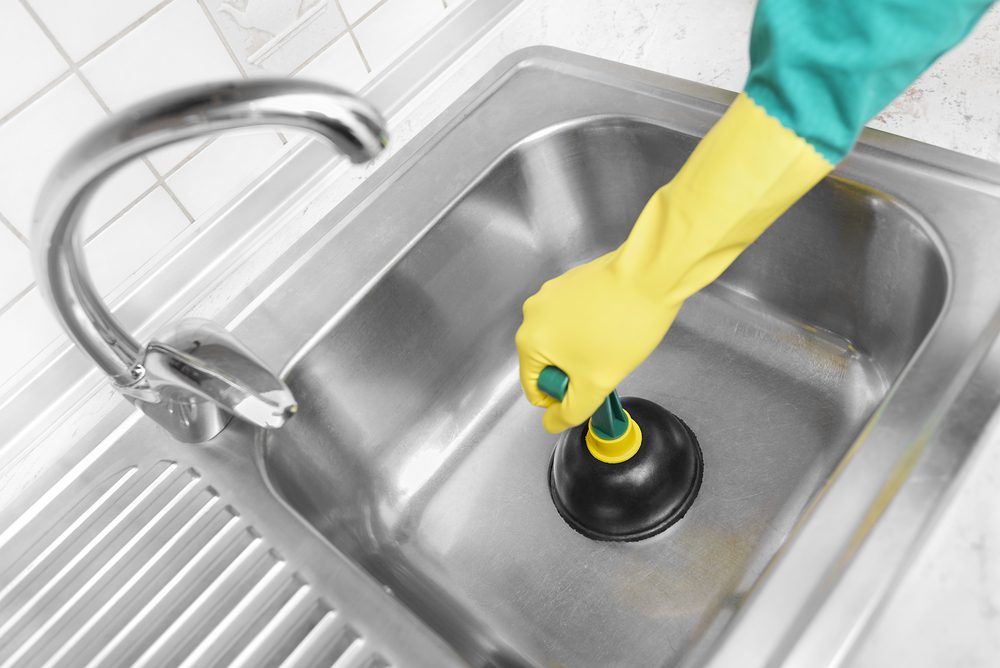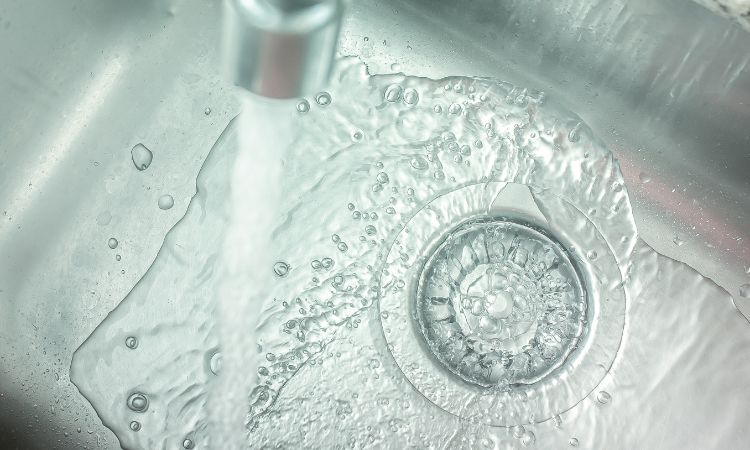What are your ideas about Solved! How to Fix a Slow Sink Drain?

Intro
We've all been there: You're cleaning your teeth or washing your hands, and you see the water pooling in the sink. Instead of swiftly swirling down the drain, it remains, transforming your once-refreshing morning regimen into a small swamp scene. A slow-draining sink isn't just bothersome; it's often an indication of larger plumbing concerns lurking under the surface area. Fortunately is that many slow-draining sinks can be fixed with a little expertise, a few standard tools, and some perseverance. Ready to tackle this job head-on? Allow's roll up our sleeves and dive right in.
Understanding the Sources Of a Slow-Draining Sink
Prior to you start poking around in your pipes, it helps to understand what could be triggering the slowdown. Understanding the source makes it less complicated to choose the right fix.
Devices and Products You'll Need
The right devices make all the distinction. Fortunately, you won't require a completely stocked plumber's van to finish the job.
Step-by-Step Overview to Dealing With a Slow-Draining Sink
Currently, let's get involved in the nitty-gritty. This detailed process will certainly assist you through simple strategies to recover your sink's water drainage.
Action 1: Remove and Tidy the Stopper
Typically, the stopper (that tiny plug you push down to block water) is the initial culprit. Remove it meticulously and wipe any hair or gunk entraped around its base. Rinse it completely before putting it back in position.
Step 2: Use a Bettor to Displace Particles
Got that bettor prepared? Position it over the drainpipe and offer it a few firm pumps. The idea is to develop suction that can loosen up any type of blockage. If you see bits of particles floating up, you get on the ideal track.
Action 3: Try a Drainpipe Snake or Cable Hanger
If the bettor doesn't work, it's time to bring out the drain serpent. Gently feed it into the drainpipe and spin as you go. You might really feel some resistance-- that's likely the blockage. Maintain twisting and drawing till you get rid of the obstruction. If you don't have a drainpipe snake, a straightened out cord hanger can operate in a pinch.
Step 4: Apply a DIY Drain Cleaner
An all-natural cleaner made from cooking soft drink and vinegar can break down recurring crud. Pour half a mug of cooking soft drink right into the drainpipe, adhered to by half a mug of vinegar. Let it fizz for about 15 mins, after that flush with hot water. This chain reaction usually does marvels for small blockages.
Tip 5: Reassemble and Evaluate the Sink
Put every little thing back with each other and run the faucet. Does the water now swirl down the drain at a respectable rate? If yes, give on your own a pat on the back. Otherwise, don't misery-- there are still a few even more dress up your sleeve.
Crucial Devices for Do It Yourself Fixes
A bettor is your best beginning point. A small, sink-sized plunger creates suction that can displace minor blockages. For even more consistent obstructions, a drain snake (in some cases called a plumbing's auger) works marvels. A pair of gloves, a flashlight, and possibly a pair of protective goggles are also convenient.
Suggested Cleansing Solutions
Moderate dish soap and warm water can help break down oily accumulation. A mix of cooking soft drink and vinegar is a time-tested natural home remedy, and chemical cleansers offer a more eco-friendly technique. Maintain chemical drainpipe cleansers as a last option, as they can be extreme on your pipelines.
Usual Culprits Behind Slow Drainage
So, what's clogging points up? Generally, it's a blend of daily debris-- think hair, soap scum, tooth paste deposit, and leftover food particles. With time, these little bits build up and cling to the pipeline wall surfaces, progressively tightening the passage and making it harder for water to travel through. Sometimes, mineral deposits from tough water can likewise contribute to the crud, creating the best tornado for stubborn clogs.
When is it Time to Act?
If you see the water draining slower than typical, it's a great concept to step in quicker instead of later. Waiting too long can cause finish blockages, undesirable smells, and even pipeline damage. If the water takes greater than a few secs to clean out after turning off the faucet, consider it a red flag and prepare to place on your do it yourself hat.
Safety And Security First: Precautions and Prep work
Prior to you launch into unclogging setting, think of safety and security. You're dealing with potentially unclean water and debris, so slip on a pair of gloves. If you're making use of chemical cleansers, make sure the space is well-ventilated and adhere to the guidelines on the label.
Protective Gear and Work Space Configuration
Lay down some old towels or dustcloths around the sink area to catch dashes. Remove any kind of items that may get in your means, like soap dispensers or toothbrush holders. Make certain you have excellent lights-- get hold of a flashlight if required.
Different Techniques for Stubborn Clogs
Not all blockages are created equal. If your sink still refuses to coordinate, consider these different services.
Baking Soda and Vinegar Technique
We currently discussed this, however it deserves keeping in mind once again. This mild, green approach is more secure than chemical cleaners and commonly fairly efficient.
Enzymatic Drain Cleansers
Enzyme-based cleansers utilize all-natural microorganisms to digest organic matter. They're an excellent selection if you're aiming to avoid rough chemicals. Just remember, they might take a bit longer to work their magic.
Chemical Drain Cleansers: Advantages And Disadvantages
Chemical cleaners can blast via hard clogs quick, yet they're not without disadvantages. They can generate warmth and fumes, damage pipes if made use of exceedingly, and pose environmental dangers. Use them sparingly, and constantly comply with the directions carefully.
Preventive Measures to Keep Your Sink Flowing
Prevention is the most effective treatment. By taking on a few straightforward practices, you can keep your sink from decreasing to begin with.
Regular Cleaning Practices
Wipe down the sink basin and fixture area consistently. Remove hair or food particles before they have a chance to wash down the drain.
Staying Clear Of Hazardous Substances Away
Think twice prior to discarding coffee grounds, grease, or coarse vegetable scraps down the sink. These offenders hold on to pipe wall surfaces, producing obstructions over time.
Regular Maintenance Checks
Arrange a quick monthly assessment. Run warm water with the sink for a few minutes, focusing on the circulation. If it appears sluggish, act fast prior to it becomes a full-blown blockage.
When to Call an Expert Plumbing Professional
Often, despite exactly how tough you try, that block simply will not move. That's when it's time to bring in the pros.
Indications That Suggest an Extra Serious Issue
If your sink drains gradually despite multiple attempts, or if you discover water backing up in other fixtures (like your shower or bathroom), you might have an extra significant pipes concern prowling much deeper in the system.
Stabilizing DIY Initiatives with Specialist Assistance
While do it yourself can save you money and offer a feeling of success, there's no embarassment in calling a professional. A specialist plumbing professional can analyze your entire plumbing configuration, guaranteeing there's no underlying damages or lasting trouble that can cost you much more down the road.
Comparing Expenses and Long-Term Solutions
Before choosing, think about the big picture. A cheap, quick fix might resolve the issue briefly, but buying a much more permanent remedy could conserve you money and stress in the future.
Evaluating the Expenditures of DIY vs. Specialist Solutions
DIY repairs frequently set you back little more than the rate of a bettor or a container of cooking soda. Expert solutions, on the other hand, featured a price tag however may prevent repetitive problems and costly repair work later on.
Buying Quality Fixtures and Upgrades
If your sink's style adds to constant clogs, it might be worth updating to higher-quality fixtures or changing the pipes design. Consider this an investment in your house's capability and convenience.
Conclusion
A slow-draining sink can seem like a small inflammation, but it's frequently a sign that your pipes needs a little tender loving care. By comprehending the root causes, using the right tools and strategies, and dedicating to basic preventive measures, you can maintain your sink streaming openly. And when all else fails, never ever be reluctant to call a specialist-- your home's plumbing deserves the investment in treatment and maintenance.
4 Tips to Fix a Slow Draining Sink
Removing the Pop-Up
This is a great place to start when it comes to troubleshooting a slow draining sink. If your sink has a pop-up, carefully take it out and remove debris that has built up around the tool. This will also allow you to see if there are any significant blockages in the drain that you can pull out on your own to help clear up the issue.
Use a Zip-It Tool
Like a snake for a large drain, a zip-it tool helps clear out any debris or hair from a sink drain. A tool like this can be used with a drain that pops out or not as it s thinner than most snake-like tools.
Use a Drain Cleaner
Whether making an at-home cleaner or buying a solution at the store, this is a common fix many turn to when it comes to a slow draining sink. There are several options available for purchase at local supermarkets, but for those who prefer to create their own solution, one of the most common is the following.
How to Unclog a Drain Naturally
Pour boiling water down the drain Pour cup of baking soda down the drain Pour cup of vinegar down the drain Wait 10 minutes Pour boiling water down the drain again Turn on the hot water faucet to clear out the solution Use a Plunger
As a worst-case scenario option, a plunger may be a good option for those who are still struggling to get debris out of their drain. This could be especially useful if there is a large item that you suspect may be significantly stuck down the drain.
https://www.abaileyplumbing.com/blog/2021/august/4-tips-to-fix-a-slow-draining-sink/

I recently found that blog entry about 7 Ways To Fix A Slow-Draining Sink Before You Call A Plumber while browsing the search engines. Sharing is good. You never know, you may be helping someone out. Thanks a lot for your time. Return soon.
Book Today!